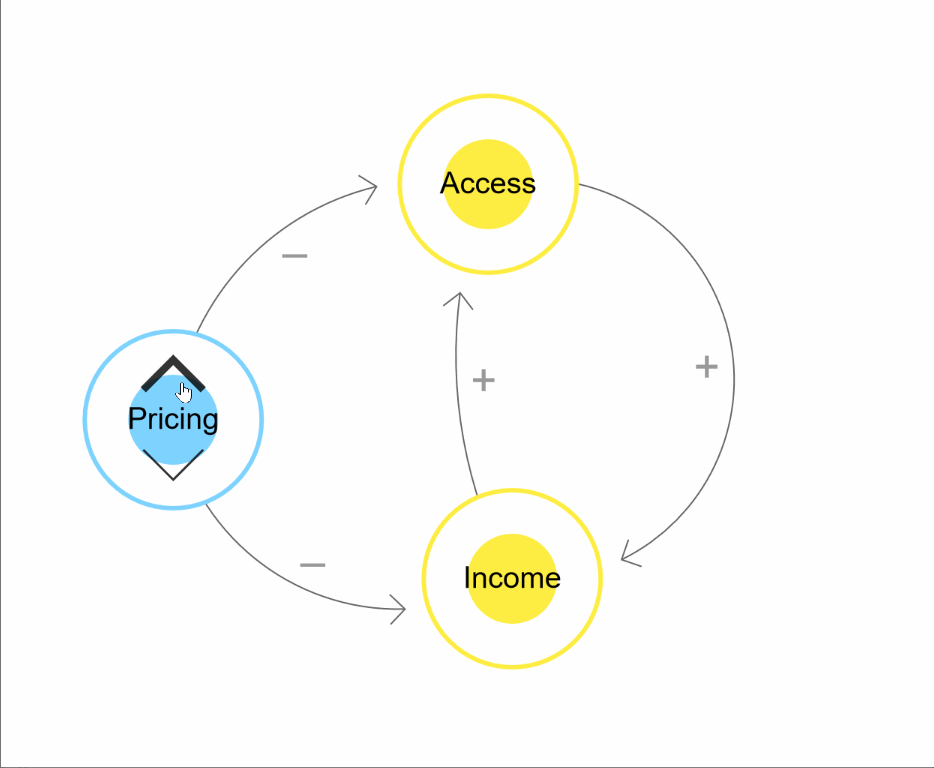Using Simulation Tools to teach Systems Thinking
I taught a course ‘Perspectives in Tackling Wicked Problems’ to middle-school students at the GenWise Summer School in May 2018. One of the objectives of this course was to get students to appreciate the need for examining various interconnections of the larger system surrounding any issue, and how this connectedness leads to complexity. Without understanding this inter-connectedness and complexity, responses tend to look at surface symptoms rather than deeper issues and patterns. This in essence is the focus of ‘Systems Thinking’- a topic that is crucial for students to learn but is rarely covered in the school curriculum.
In planning for the course, we had to carefully choose contexts and tools that would allow students to understand key ideas and apply these to different systems. We chose ‘Urban Transportation’ as the primary context to develop systems thinking capabilities, as all our students could relate to issues like traffic congestion, pollution and other aspects of transportation. We also used some computer simulation tools, particularly a simple-to-use tool called Loopy, which allows users to map connections and study the dynamics of the connected system visually.
One of the first questions we studied by mapping in Loopy was - "Would building new roads reduce traffic congestion?" Students explored this through research and discussions, and through interactions with transportation experts who visited our program. Putting all this together in Loopy helped students to really consolidate their learning. Look at what the Loopy animation below shows us-

1) At first, when we respond to congestion by building more roads, congestion reduces.
2) However, more roads (especially highways), leads to the sprawl of the city and longer commutes. Further, more and better roads 'induces' a higher demand for car-trips and more people bring out cars on the road. This in turn has the unintended consequence of increasing congestion.
Students played around with this Loopy Model to understand the dynamics of the system, and you can do so too. For example, students explored what placing restrictions on the number of cars on the road (e.g. through congestion charging) might result in, or what effect increasing the availability of public transport might have. Thus, they were getting trained to look at 'deeper patterns' in the system before responding, in contrast to reacting to immediate events and symptoms. (Los Angeles in the US has expanded freeway capacity several-fold in the last couple of decades, with no impact on traffic congestion!)
Having been introduced to the ideas of inter-connectedness, feedback loops and complexity, students started building their own maps of systems (including Loopy models) to explore causes, effects and relationships, as well as representing the essence of their understanding. One student studied a research report on slum-dwellers and their transportation options in Bangalore to answer the question 'Should public transportation be subsidized'? Look at how he used Loopy to represent how the vicious cycle of poverty is perpetrated in the absence of subsidy on public transport and how a virtuous cycle can be set in motion.
Slum-dwellers are unable to access opportunities when charged commercial prices for public transport, which in turn reduced their income, which in turn reduces their access to opportunities.

On the other hand, when they are provided subsidized public transport, they have a chance to break free from this cycle, due to increased access to opportunities.

It was really heartening to see students using these tools and the new vocabulary they had learnt, to analyze various issues by the end of the course in a mature fashion. Take a look at the chart students made at the end of the course to represent their thinking approach 'before' and 'after' the course.

We need to educate the next generation about the mistakes we have made, and equip them with tools such as Loopy to think and respond better to issues that plague us as a society.
